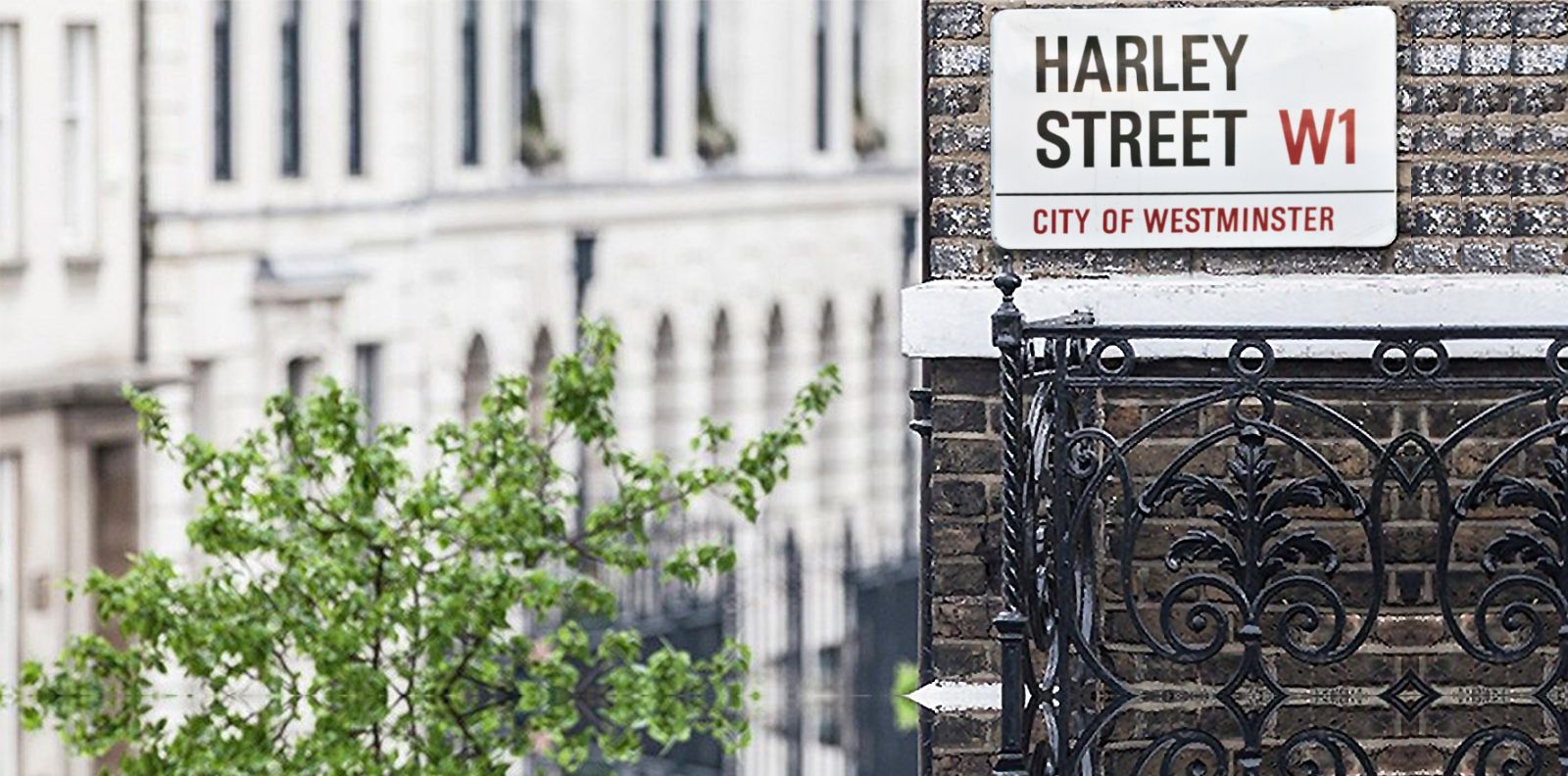
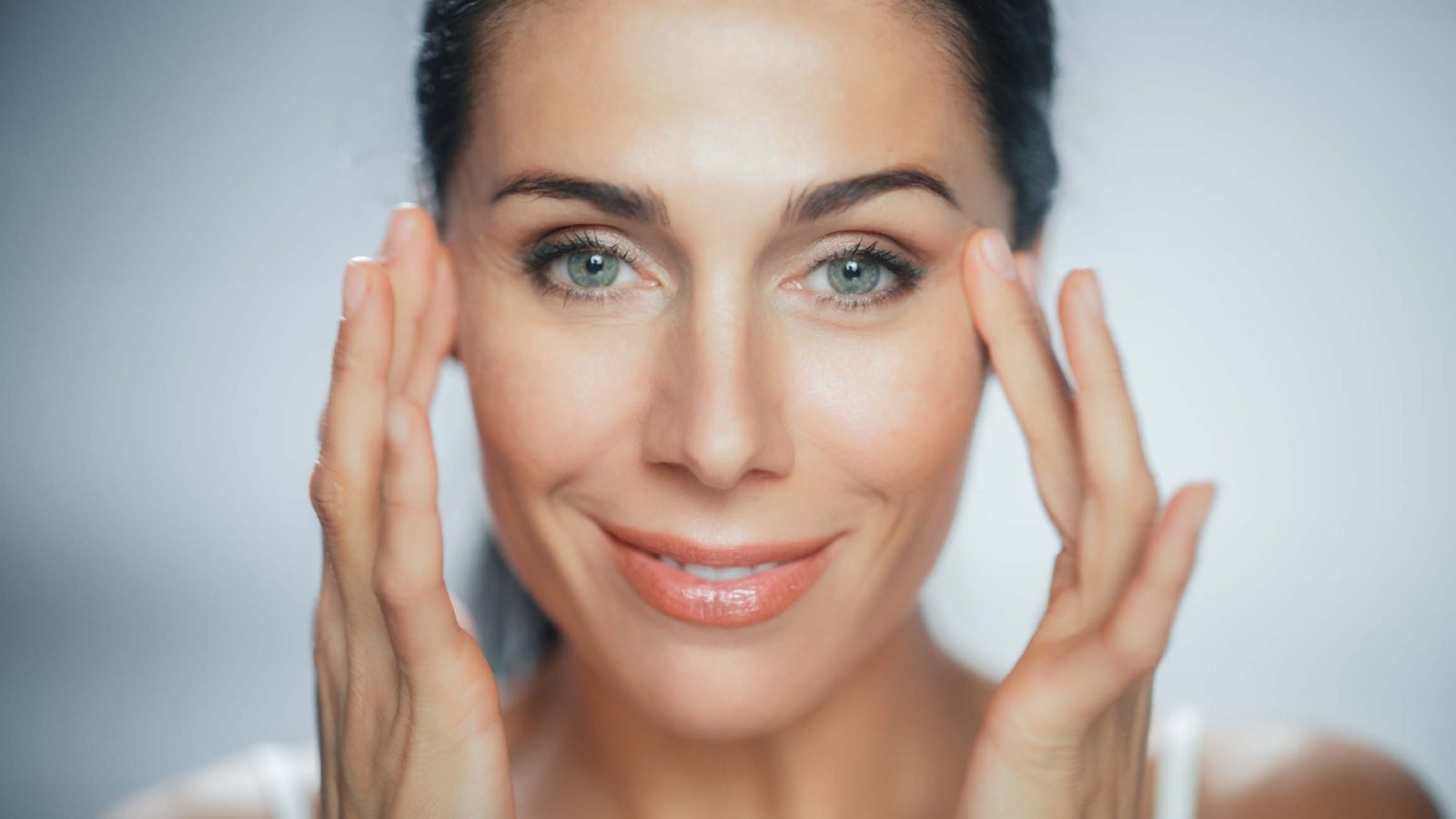
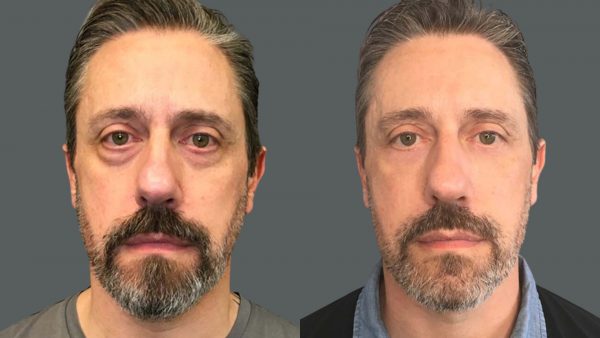

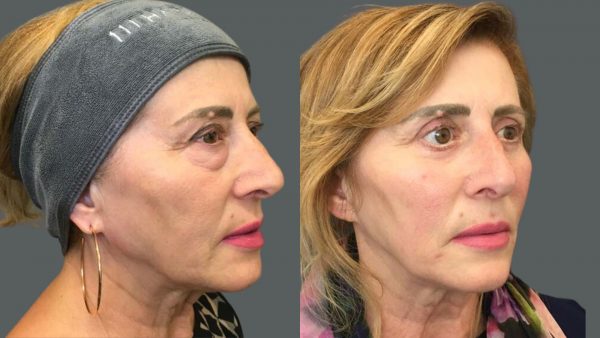

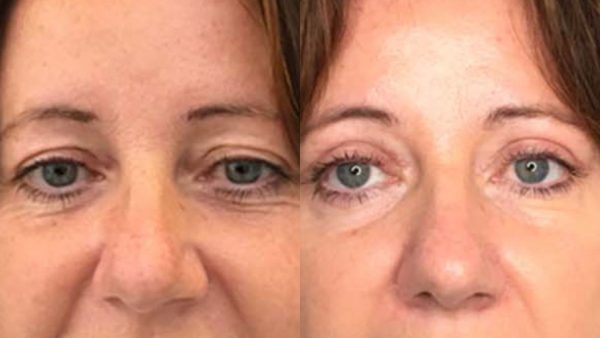

How Blepharoplasty is done?
First things first: a Blepharoplasty can be performed on the upper or lower eyelid, or both depending on your surgical aims, and involves the surgeon gently removing the excess eyelid skin before neatly closing the incision.
During an upper Blepharoplasty, Dr Yannis will mark the upper eyelid, using a medical protractor to measure the amount of skin that will be removed – usually this will be millimetres. An Upper Blepharoplasty is most suitable for someone whose eyelids are heavy or causing hooding. A good way to see what a Blepharoplasty would look like on you would be to lift and smoothen the upper eyelid skin gently.
![]()
![]()
For an Lower Eyelid Surgery, which is more suitable for those who have visibly puffy and wrinkly under-eyes, the measuring and marking process will be the same as an Upper Eye Lift. However, a Lower Blepharoplasty is able to reduce fat that can form beneath the under-eyes as well as treating just the superficial, surface layer of skin that causes laxity.
What a lot of patients don’t know, is that if you have visibly protruding eye bags, this can be caused because of swelling (oedema) and liquid retention, however it can also be caused by excess fat pads in the tear trough region. An experienced doctor will be able to confirm which applies at the consultation stage and advise on the best course of action.
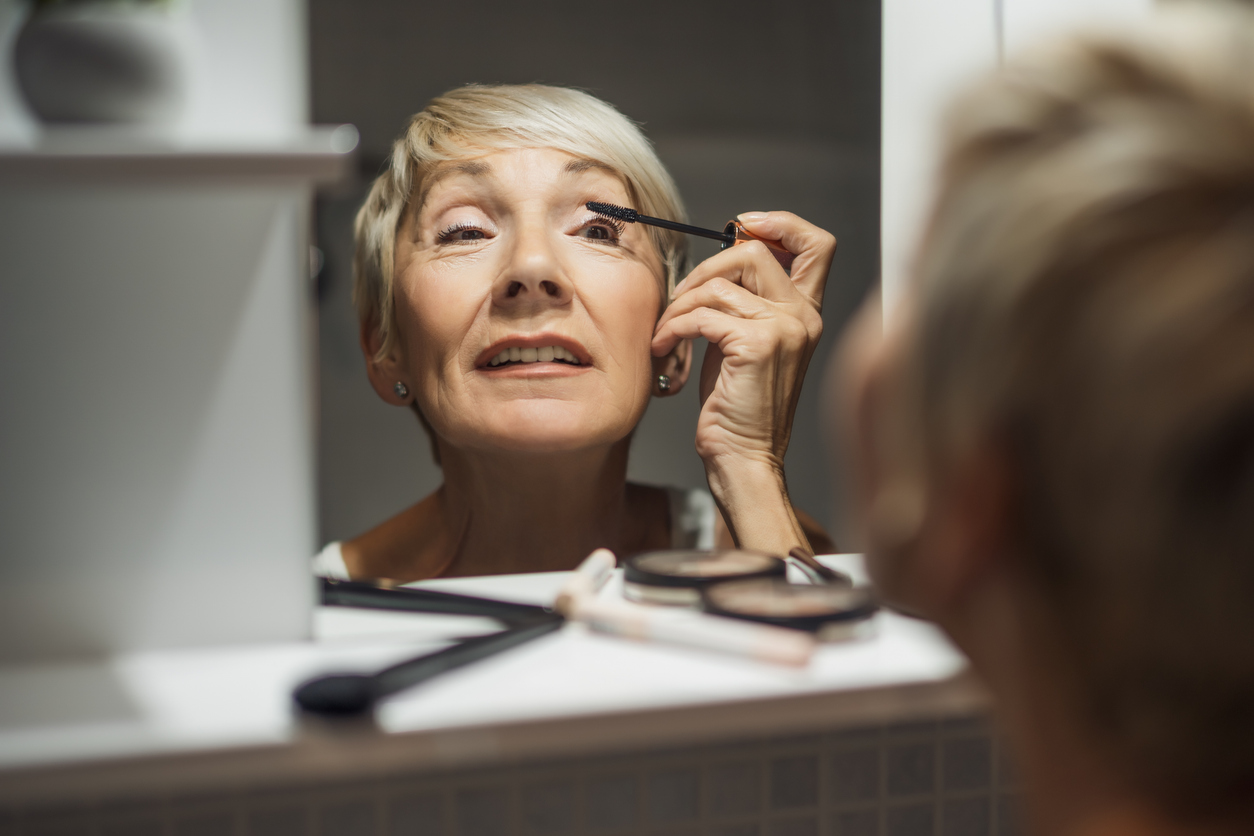
It’s best to avoid wearing eye makeup until your eyes have fully healed, as wearing mascara often means you have to rub your eyes to remove it, this can disturb the stitches. The other risk is that it could cause an infection if the product is old. Makeup on the face is fine to wear but always check with our Surgical Team as they will be able to advise you further.
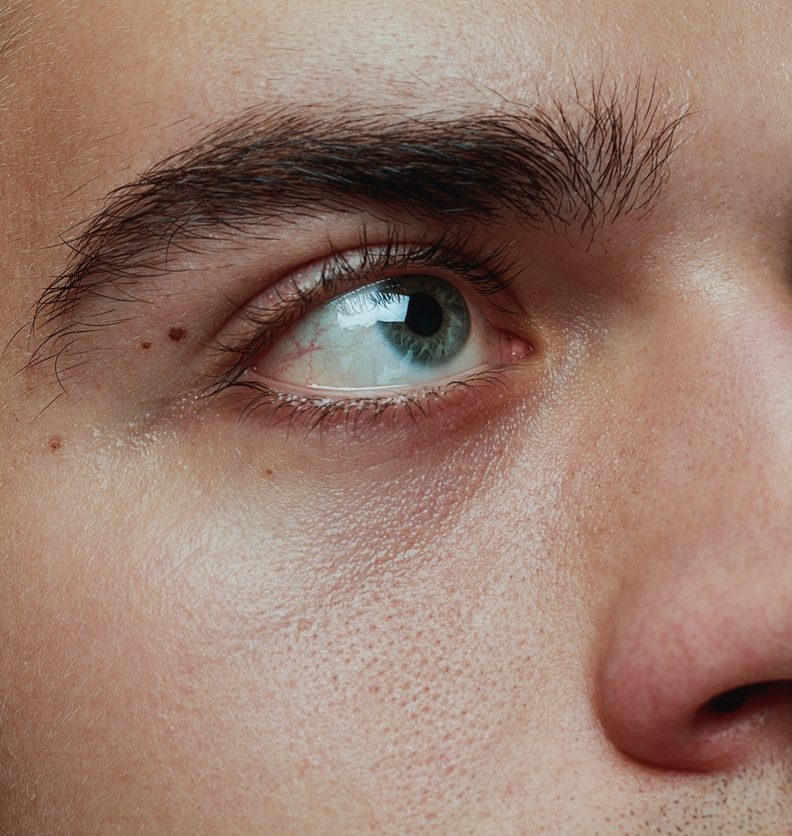
Blepharoplasty will not directly remove dark circles as dark circles are caused by pigmentation or thinner skin. If you have puffy or wrinkled under-eyes, however, a Blepharoplasty works to target them. Generally, a Blepharoplasty may help to improve the appearance of dark circles, but it is not the first treatment we would recommend if that is the sole concern.
Our first choice as a treatment for dark circles would be Ameela. This is an under-eye injectable that works to immediately brighten the eyes, stimulate collagen as well as protect the skin against free radicals and more.
Blepharoplasty stitches are removed 9-14 days after surgery, however, this can be longer depending on how fast your skin heals.
Depending on the technique too, some incisions are made within the lower eyelid which means no stitches are needed to be removed as they will be naturally dissolved by the body.
This is informally called a no scar Blepharoplasty and the medical name is transconjunctival Blepharoplasty.
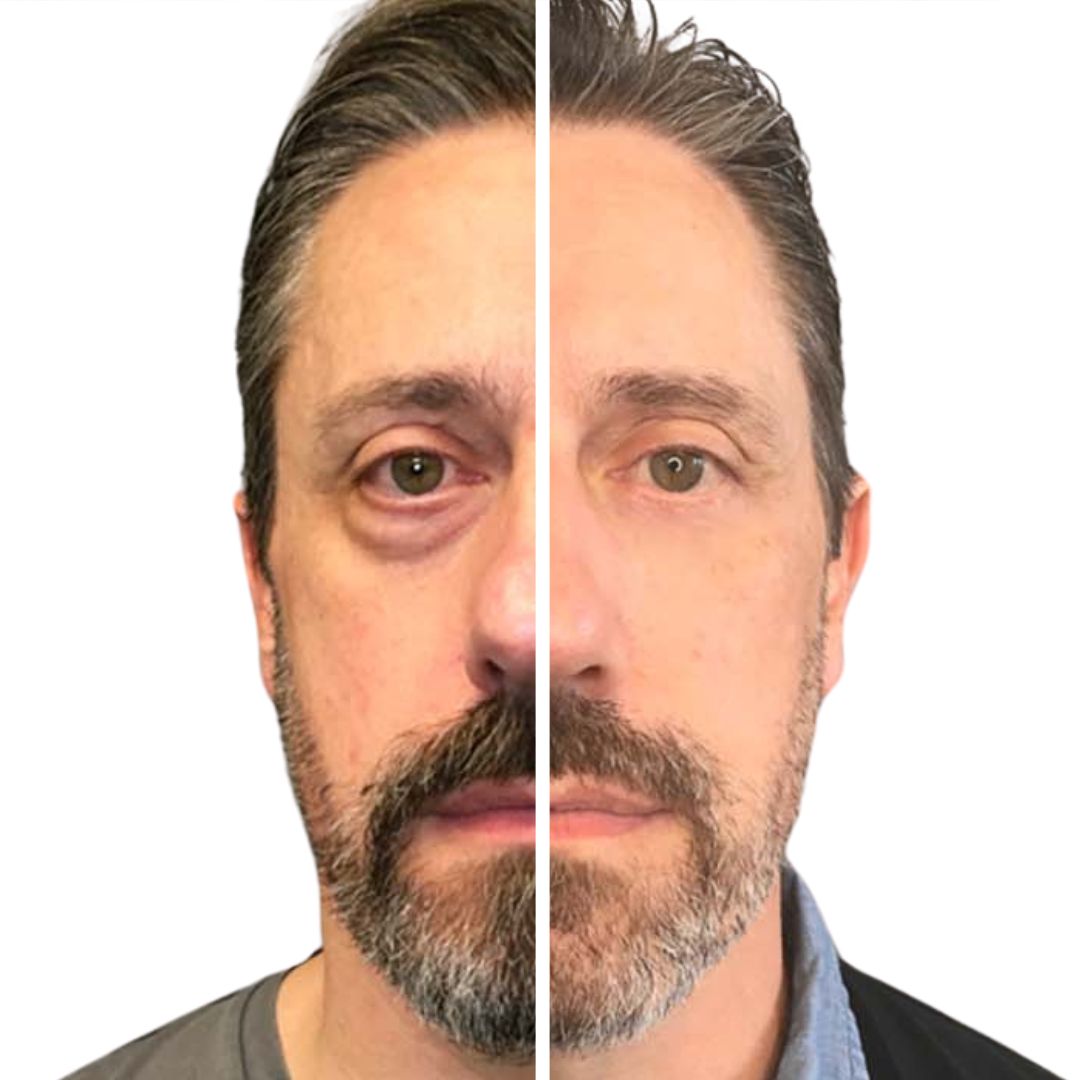
The great thing about an Upper Blepharoplasty is that the incisions are hidden in the natural crease of the eyelids. So while they are there, their appearance is minor, fading over time and becoming virtually imperceptible.
As mentioned earlier, there is a type of no scar Blepharoplasty that means all incisions are made under the lower eyelid. If you’re interested in this type of Blepharoplasty, fill out our Consultation Form and ask for a transconjunctival Blepharoplasty.
Blepharoplasty can be done under local anaesthetic, so yes, you’ll be awake during this procedure. We will cover your eyes throughout as this often makes our patients feel much more comfortable.
If your Eye Lift is combined with another procedure like a Facelift for example, then this will be performed at the same time under general anaesthesia.
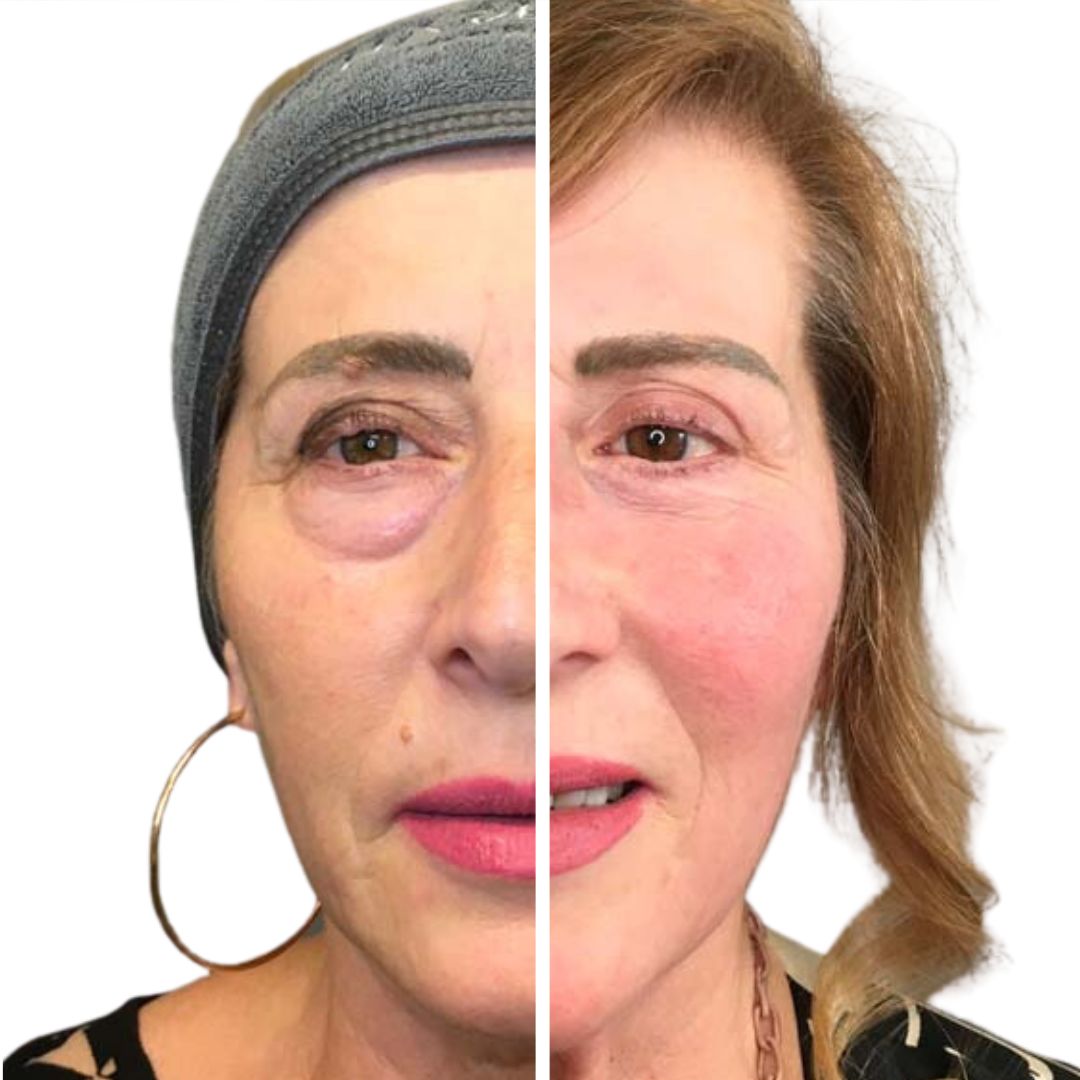
Yes. You can have a Blepharoplasty again; this is an option for those who are unhappy with their eyelid surgery the first time around. Usually, for Dr Yannis’ patients however, only one Blepharoplasty is required.
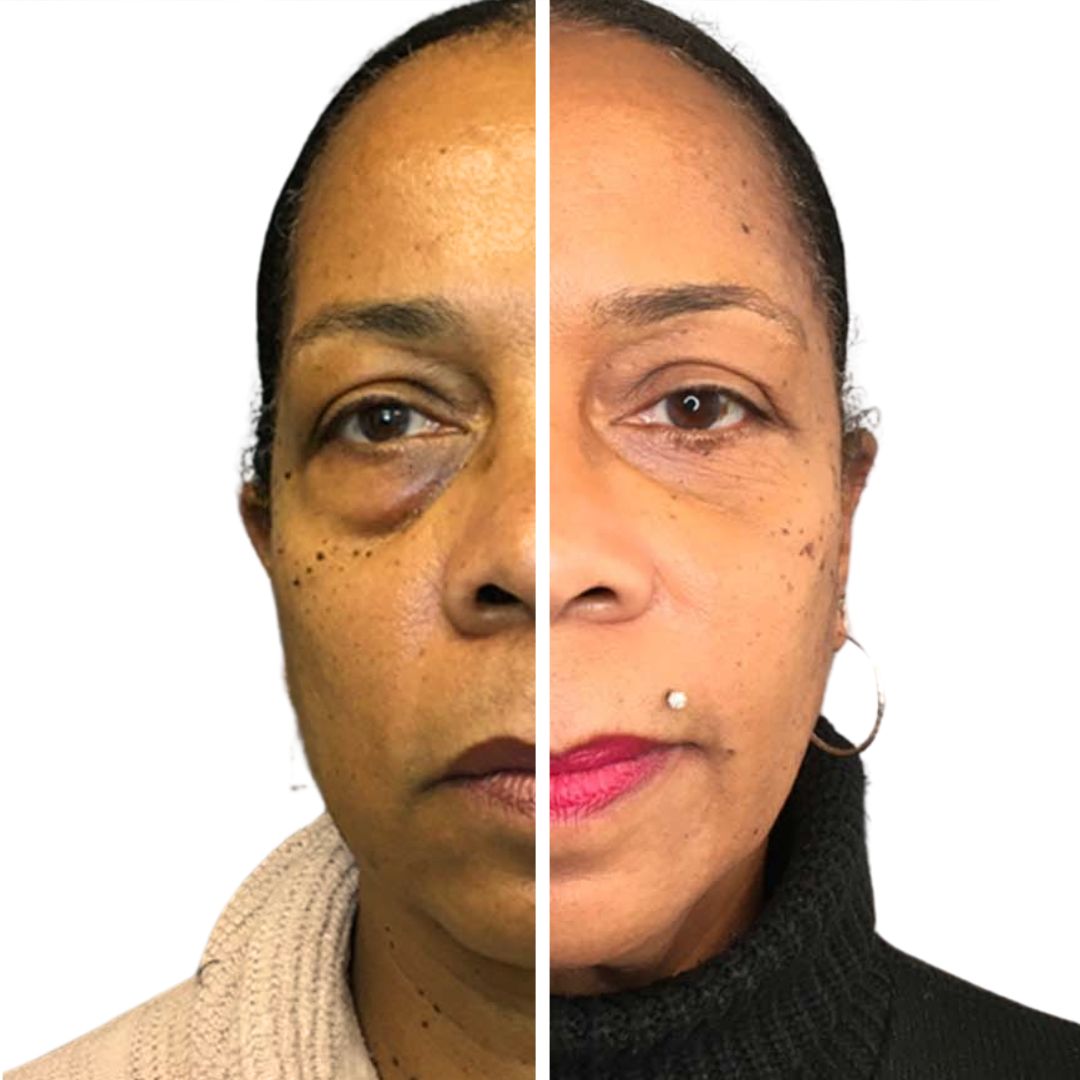
Choosing the right surgeon for your Blepharoplasty is essential. So, our top tip is not to rush it, don’t rush your research – with any surgery, let alone a Facial Surgery.
When choosing the best Blepharoplasty surgeon, look at their before and afters and the reviews left by previous patients.
One way to spot a highly-trained Plastic Surgeon would be to look at the letters after their name. Good indicators of a qualified person would be if they have the below letters:
✔ MD in their name (which means they are a Doctor of Medicine)
✔ FACS – Have undertaken a Fellowship from the American College of Surgeons
✔ FRCS – They have undergone specialist training during a Fellowship of The Royal College of Surgeons
✔ PLAST – They are trained specifically in Plastic Surgery
In addition to their qualifications, in the UK, all doctors must be registered with the GMC (General Medical Council). You can search the GMC register, to ensure they have a license.

At 111 Harley St., Dr Yannis will perform your Blepharoplasty. He’s a multi-board certified Plastic Surgeon, with over thirty years of surgical experience.
See some of the Blepharoplasty before and afters he has produced for his patients.
How will Blepharoplasty change your face?
One of the marvellous things about a Blepharoplasty is that it can transform the face (in a good way). After looking at this result, you’ll realise what a big impact the eyes make in facial aesthetics.
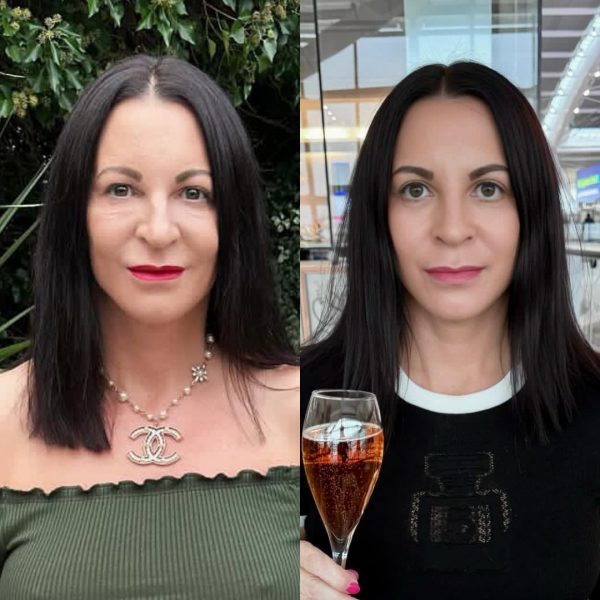

See how much of a difference a Blepharoplasty has made to one of Dr Yannis’ patients: she looks younger, the crepey skin beneath her eyes has gone, a double eyelid crease has been created to replace her initially rather hooded one, and because of all these effects, her nose actually looks smaller and more lifted.
Request a Consultation
Please note, all consultations are subject to the applicable consultation change or deposit.
REQUEST A CONSULTATION
To request a Blepharoplasty prices, please complete this form.
Alternatively, Call Us On 0344 692 1111
Our Patient Advisors are contactable via phone Monday to Friday from the hours of 10:00 – 18:00
To request a consultation, please complete this form.
REQUEST A CONSULTATION
To request a Blepharoplasty prices, please complete this form.
Alternatively, Call Us On 0344 692 1111
Our Patient Advisors are contactable via phone Monday to Friday from the hours of 10:00 – 18:00
